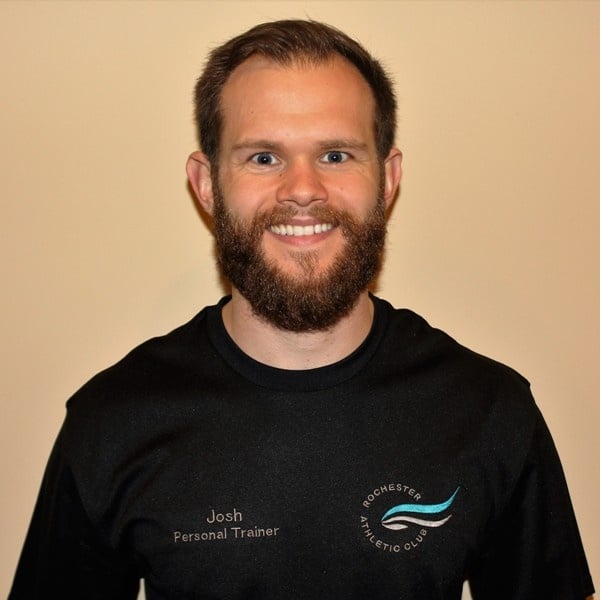5 Common Fitness Myths Exposed
Posted by Josh Lewis on April 29, 2019
Have you fallen victim to any of these fitness myths that have plagued exercisers for years? Read this article and get back on the right track!
There are many inaccurate fitness beliefs (or myths) that have persisted for a long time within the fitness industry. These myths have had gym goers spinning their wheels, getting frustrated with their results, and sometimes even quitting their routines all together. In this blog I aim to shed light upon what are some of the most glaringly incorrect myths that I’ve been asked about over my career.
Myth #1: Use “muscle confusion” to keep your body guessing and prevent it from getting used to your workouts
While mixing up your exercises to focus on different areas from time to time can be a good thing, some people fall into the trap of doing too much variety. In essence they do a “flavor of the day” workout. This means that they come in and do all sorts of different exercises without knowing what muscles they are actually focusing on. They also do not know how much weight or how many repetitions they should be doing to get good results.
The belief in their mind is that by always doing something different they are confusing their muscles. They believe this will keep muscles working in the most beneficial way and that they will see the best results. However, there are a few problems with that. How do you know how much work your body just did? If you don’t know how much work you just did then how are you supposed to improve from your previous workout?
To receive a better long term benefit I prefer using progressive overload. Progressive overload is the gradual increase of stress upon your body during exercise. In other words, each time we workout we are trying to do just a bit more than our previous workout.
Let’s use barbell squats as an example. This week you will aim to squat 135 lbs for 3 sets of 10 repetitions. The next time when you squat you’ll try to do 3 sets of 12 repetitions at 135 lbs. If you were able to do that, on the third time you could try 145 lbs for 3 sets of 10 repetitions. You would continue to try this with the same exercise for 3-5 weeks before switching up exercises.
At some point you will obviously eventually hit a ceiling where you can’t constantly keep moving up in weight or repetitions. However, by following progressive overload you will be able to track how much you are doing and then will always have a goal of doing just a bit more. This will encourage you to keep pushing yourself to improve towards your goal.
Myth #2: The more sore you are after a workout, the better a workout it was
Muscle soreness occurs when your body receives a new training stimulus, like a new exercise, or added weight or repetitions. While soreness is not necessarily a bad thing, it is not the only indicator to how good a workout was. In fact, too much soreness can actually mean you over did it. To learn more about this, we will look at muscle protein synthesis, which is the process of repairing, recovering and adding muscle to the area you worked out.
A study in the Canadian Journal of Applied Physiology found that following a bout of resistance training, muscle protein synthesis increases rapidly from baseline levels, is double at 24 hours, and declines rapidly at 36 hours back to almost baseline levels (MacDougall, 1995). This study shows us that after two days have passed from our workout, our body has finished the process of adapting, and is capable of once again working those same muscles to repeat the process of muscle protein synthesis.
However, if you’re like me, you’ve done workouts where you’re still sore way past two days. In these cases, I was so sore there was no chance I was going to complete that workout well again just two days later. If we think back to the previously referenced concept of progressive overload; there’s no way we’ll be able to increase stress and push our body more if it is still sore and hasn’t fully recovered from the previous workout.
Finding the right balance and level to your workouts is the solution for this. Anyone off the street could come up with a crazy workout that would make even the fittest of people on earth sore for days. A good workout is one that pushes your body to improve towards your goals one small planned step forward at a time.
Myth #3: Lifting weights makes you bulky
This myth has been perpetuated partially in thanks to the many magazine covers, fitness models, and Mr. Olympia shows that feature extreme physiques (many of which may be enhanced by being on “the juice”). However, at the end of the day, it all comes down to testosterone. Men have more testosterone than women and this increases their ability to put on muscle. The more testosterone you have the more muscle mass you will have because of the testosterone’s ability to increase muscle protein synthesis (Griggs, 1989).
There are many people who spend 5-6 days a week in the gym lifting weights for hours on end with the goal of adding a lot of muscle who still struggle to do so. Adding in 2-3 days of weight training per week won’t suddenly leave you waking up one morning looking like Arnold. In fact, muscle is denser than fat. So one pound of muscle will take up less space than one pound of fat, helping you to look leaner (smaller). If you were able to swap all of the pounds of fat you wanted to lose for an equal amount of pounds of muscle, this would actually leave you much smaller than you currently are.
Also, in order for the body to be able to gain a decent amount of muscle, you must be eating in a calorie surplus. This means you are consuming more calories than you’re burning. If your goal is to try to lose weight, and you are lifting weights to assist in that, hopefully you’re not eating in a calorie surplus for long amounts of time.
Myth #4: You need to do more core exercises to shrink your stomach
Doing endless amounts of crunches and planks won’t help you to lose the fat around your stomach. Unfortunately the stomach is the first place that our body stores fat and one of the last places it takes it off from. We aren’t able to spot reduce any area on our body no matter how many exercises we do for that area.
For example, consider a study published in the Journal of Strength and Conditioning Research. The study found that despite participant’s strength training only one of their legs during the study, they saw equal amounts of fat loss in both their legs and even greater fat loss in their trunk (Ramirez-Campillo, 2013).
To lose the fat around your stomach you have to focus on total body fat loss. While I do think that having a strong and functional core is important, the abdominals by themselves aren’t a very big muscle group. Doing a lot of crunches won’t have you burning many calories. To achieve more total weight loss, focus on exercises that work large muscle groups and multiple areas at once.
Myth #5: Long bouts of steady state cardio is the best way to lose weight
While cardio will help out your weight loss initially and should be included in a healthy exercise regimen, it should not be the first step in a weight loss plan, and should certainly not be used as the only piece. Cardio will burn off more calories than your average weight lifting session, there’s no disputing that. However, our bodies adapt to cardio very quickly. Instead, I encourage my clients to focus on strength training first and use cardio as more of a turbo button.
When performing cardio we are sending the signal to our body that we want to become extremely efficient. This then prompts the body to get smaller by losing both fat but also muscle mass. When we start to lose muscle mass we also start to lower our metabolism (the more muscle you have the higher your metabolism). A lower metabolism will then lower our body’s ability to burn off calories on its own - just by doing the normal things that we do in a day. This leaves you having to constantly manually burn off calories on a daily basis by performing cardio in fear that you might gain weight if you don’t.
According to the National Council on Strength and Fitness one pound of muscle burns 30-50 calories per day. By focusing on strength training and building muscle first you will begin to increase your metabolism. Then your body will be burning more calories by itself, without having to do crazy hours of cardio. This is by no means the quickest way to achieve weight loss but it is definitely the best long term option. It allows you to not only lose, but also to sustain weight loss and prevent your weight from yo-yoing up and down in the future.
Moving Past the Myths
Having the right information and a smart plan can make your limited exercise time way more productive. Hopefully by having exposed some of these myths it will allow some of you to move on in a better direction. If you have questions about this article, or any other exercise related questions, feel free to reach out to myself or one of our other trainers here at the Rochester Athletic Club.
Sources
MacDougall, J. D., Gibala, M. J., Tarnopolsky, M. A., MacDonald, J. R., Interisano, S. A., & Yarasheski, K. E. (1995, December). The time course for elevated muscle protein synthesis following heavy resistance exercise. Retrieved from https://www.ncbi.nlm.nih.gov/pubmed/8563679/.
Griggs, R. C., Kingston, W., Jozefowicz, R. F., Herr, B. E., Forbes, G., & Halliday, D. (1989, January). Effect of testosterone on muscle mass and muscle protein synthesis. Retrieved from https://www.ncbi.nlm.nih.gov/pubmed/2917954.
Ramírez-Campillo, R., Andrade, D. C., Campos-Jara, C., Henríquez-Olguín, C., Alvarez-Lepín, C., & Izquierdo, M. (2013, August). Regional fat changes induced by localized muscle endurance resistance training. Retrieved from https://www.ncbi.nlm.nih.gov/pubmed/23222084.

Josh Lewis
Personal Trainer Josh Lewis M.Ed., NSCA CSCS has a Bachelor’s degree in Kinesiology from UW-Eau Claire and a Master’s degree in Kinesiology from the University of Minnesota. When he’s not at the gym he enjoys hiking, camping, fishing, hunting and watching sports with family and friends. Josh’s love for being active, along with the enjoyment he receives from helping people reach their goals, is what led him to become a Personal Trainer.
Contact Josh Lewis at (507) 287-9335 ext. 351.



